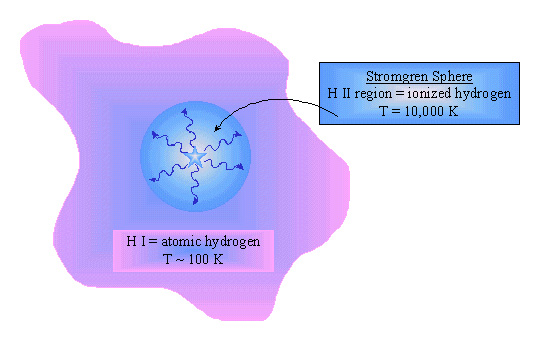
The cross section for ionization is very high: σ ~ 10-17 cm2
This means that if the photon gets to within 108.5 cm for a proton, an ionization event will occur. 108.5 cm is about 3000 fm, or 3000 times the radius of a proton.
As an example: How far will an ionizing UV photon travel in an H I cloud with density of no = 1000 atoms per cc.
Now let's think physically about what is going on. We just ionized a hydrogen atom thus creating
a proton and a free electron. If that free electron immediately recombines with a proton, then
nothing really happened. However, the density is very low and so there is some timescale
(the recombination time scale) involved in when the free electron recombines with a proton.
As soon as the hot star has ionized some hydrogen, its opacity to ionizing photons becomes
much larger, so the photons can travel further distances to ionize more of the H I cloud.
Thus the radius of the ionized sphere grows with time until an equilbrium between the ionization
rate (which is function of the temperature and luminosity of the ionizing star) and the
recombinbation rate. At that time, for every newly ionized hydrogen atom there is a newly
created hydrogen atom from recombination. This is called a Stromgren sphere.
Inside this spherical volume, electrons and protons recombine at a volumetric rate:
where rr is the number of recombinations per unit time in a unit volume (e.g. cm-3 s-1) and αH is like a cross section for interaction (and has a value of 3 x 1013cm-3 s-1). nenp is the product of the number density of electrons and protons (which should be approximately equal at all times).
For example, what is the volumetric recombination rate if ne= np = 103 cm-3?
We can express the recombination time (the time it takes for free electrons to recombine with protons) as:
Nu = rrV = αHnenp4/3 πR3s
Notes: In most H II region environments there is not a lot of dynamic range in nenp - if the density is too low the photons have to travel to far to interact with a proton and equilibrium will not be reached.
if the density is too high then unless the star is extraordinarily hot, there will be an insufficient number of photons (obviously if Nu goes to zero than Rs goes to zero as well)
Example:
A star of spectral type O5 emits Nu ~ 6 x 1049. For ne ~ 1000 this leads to Rs ~ 1.2 parsecs. The mass of this H II region would be about 104 solar masses (the mass of the 05 star is about 20 solar masses). This is a typical H II region.

Now in reality, life is never this simple and star formation in GMC will likely produce many expanding H II regions which can run into each other and create shock fronts thus fostering a twisted mass of complexity:
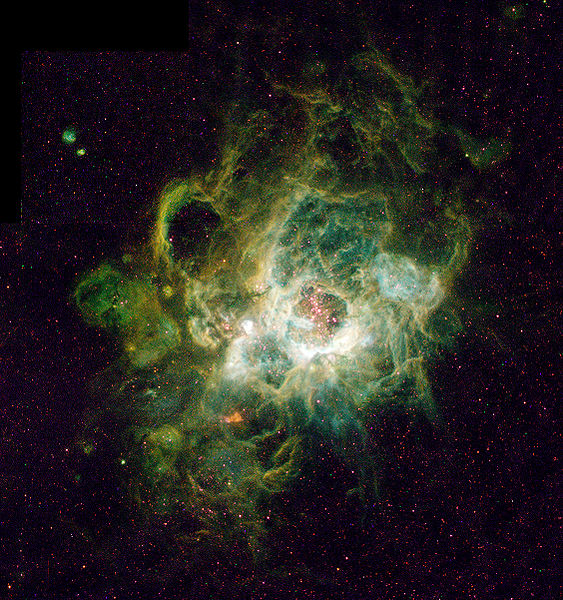
Clearly the formation of massive stars can not hide. It will be evident in the recombination emission line spectrum and the primary optical emission line in this case is in the red (6563 angstroms) which is why most H II regions appear red.
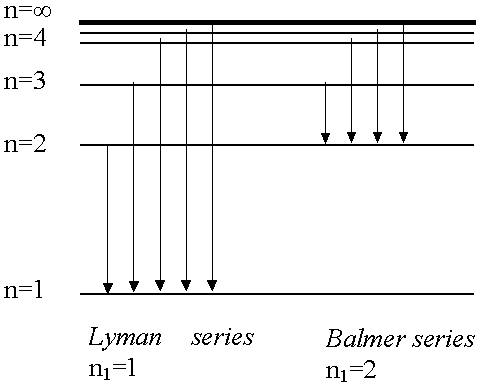
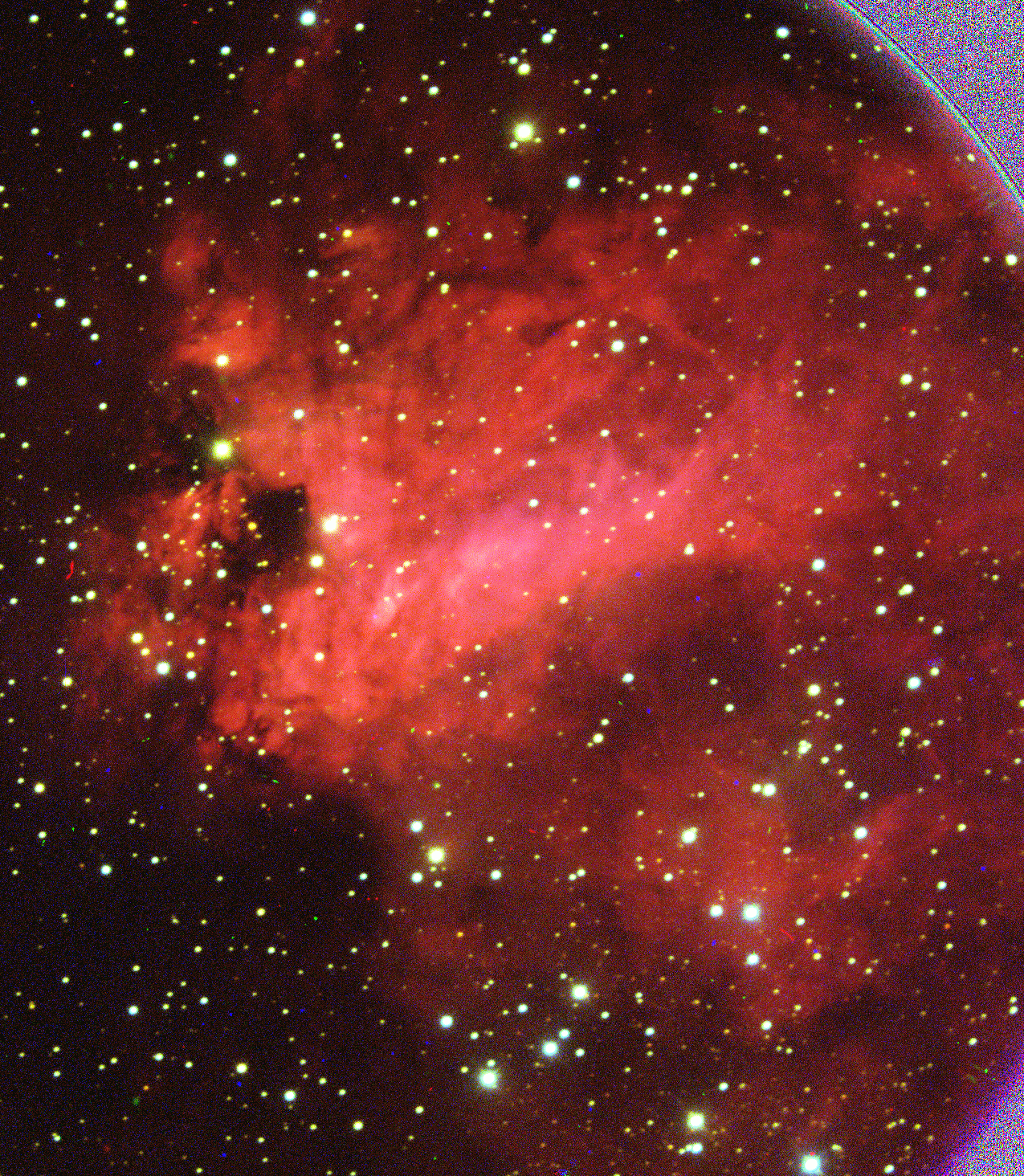
Therefore, if we can determine the Hα luminosity of some nearby galaxy we can in principle estimate what is current star formation rate is as that luminosity is a direct measure of the intergrated Nu produced in all the star forming regions in that galaxy.
For many disk galaxies, the spiral arm regions are where the star formation is occuring (within GMC complexes). If you produce an Hα image of a disk galaxy it often looks like what is shown below where the individual H II region complexes (each of the red areas is larger than a single idealized H II region) line up along the spiral arms.
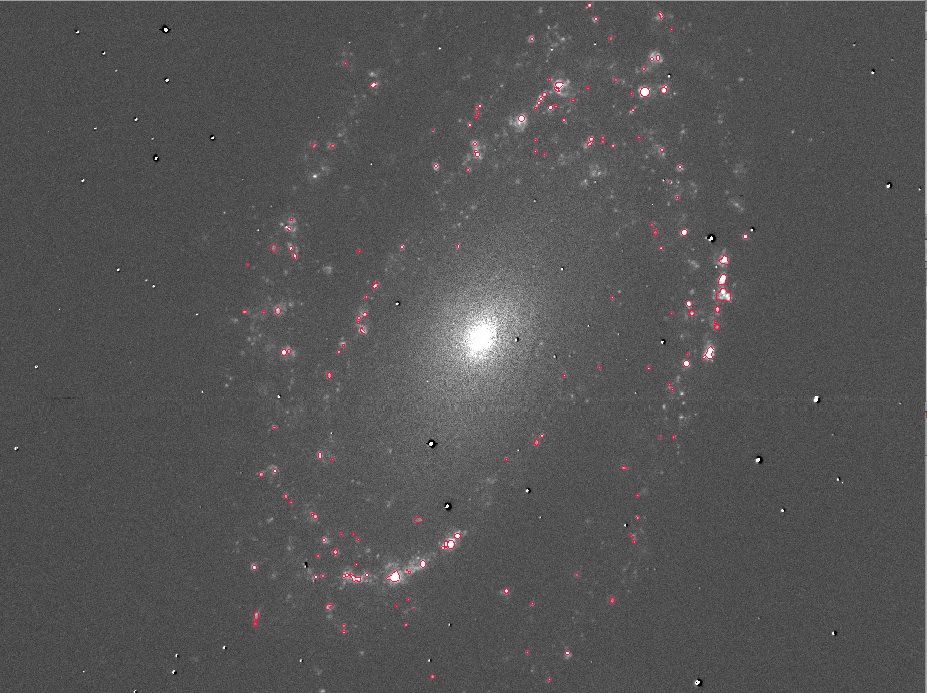
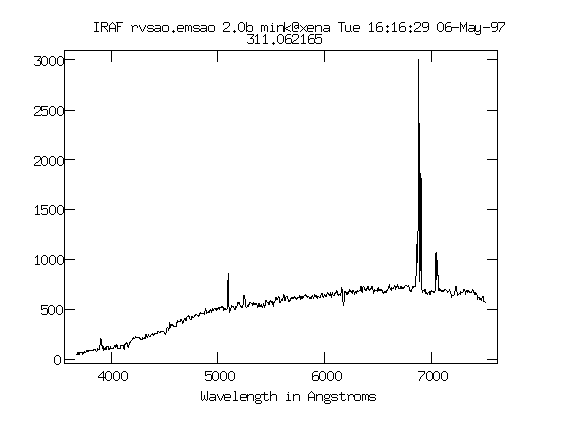
In 1912, astronomer V. Slipher using a spectrograph at the Lowell Observatory began to take spectra of "nebulae" - not knowing anything about the nature of these nebulae. One of these nebula was NGC 1068. This object has very strong emission lines that can be identified as emission from the Balmer series (as well as Oxygen emission).
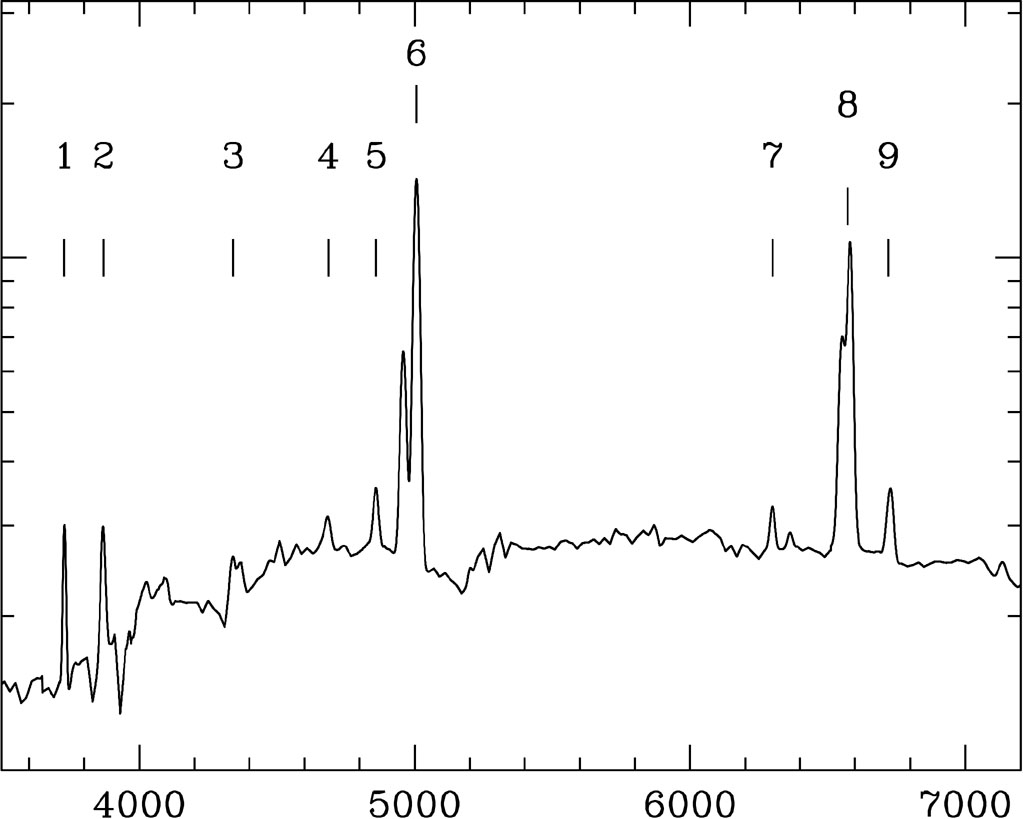
Slipher was easily able to identify the Hα line in the spectrum of NGC 1068 but noticed that the wavelength of this line was shifted by about 25 angstroms to a wavelength of 6588 indication that this object, NGC 1068, was moving away from us (at velocity of about 1150 km/sec). This was among the first set of measurements showing the redshifts of "spiral nebulae".